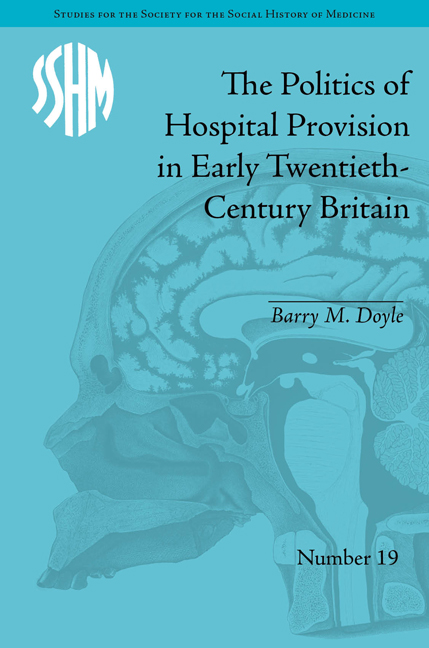Book contents
- Frontmatter
- CONTENTS
- Dedication
- Acknowledgements
- List of Tables
- Introduction
- 1 Leeds and Sheffield: Economic, Social and Political Change
- 2 Hospital Provision: Voluntary and Municipal
- 3 Patients and Access
- 4 Specialization and the Challenges of Modern Medicine
- 5 Finance
- 6 The Politics of Hospital Provision
- 7 Co-operation, Competition and the Development of Hospital Systems
- Conclusion
- Notes
- Works Cited
- Index
3 - Patients and Access
- Frontmatter
- CONTENTS
- Dedication
- Acknowledgements
- List of Tables
- Introduction
- 1 Leeds and Sheffield: Economic, Social and Political Change
- 2 Hospital Provision: Voluntary and Municipal
- 3 Patients and Access
- 4 Specialization and the Challenges of Modern Medicine
- 5 Finance
- 6 The Politics of Hospital Provision
- 7 Co-operation, Competition and the Development of Hospital Systems
- Conclusion
- Notes
- Works Cited
- Index
Summary
The provision of a modern and extensive hospital infrastructure, as seen in Leeds and Sheffield in the first half of the twentieth century, was intimately intertwined with the growth and transformation of the patient population. Between the wars the general public acquired what one Leeds politician described as the ‘hospital habit’, with inpatient numbers increasing by about 35 per cent at the voluntary general hospitals, by around 300 per cent at the specialist hospitals and by at least 100 per cent in the municipal general institutions. By the outbreak of the Second World War the cities' hospitals were treating around 58,000 inpatients – an overall increase of 65 per cent. Added to this impressive expansion was a growth of 50 per cent in the number of outpatients to 120,000 while casualties doubled to 80,000 and, most remarkable, outpatient and casualty attendances quadrupled to almost one million visits. Put another way, these combined figures were equivalent to one-fifth of the population of both cities receiving hospital treatment annually by 1938.
Inpatient and outpatient numbers rose across the country in this period but the speed and shape of this growth in Leeds and Sheffield was determined to some extent by economic, social and political factors specific to the cities. Although there are clear signs that health care was becoming more democratic, this was not as yet a universal system and access to treatment was determined by a complex set of criteria.
- Type
- Chapter
- Information
- Publisher: Pickering & ChattoFirst published in: 2014

